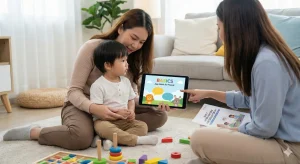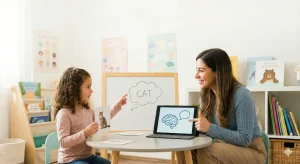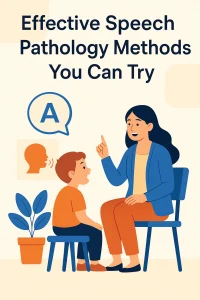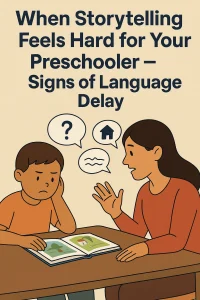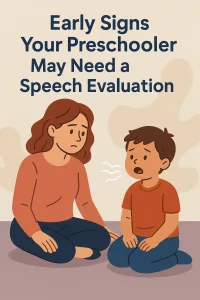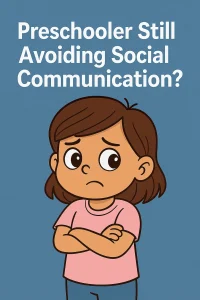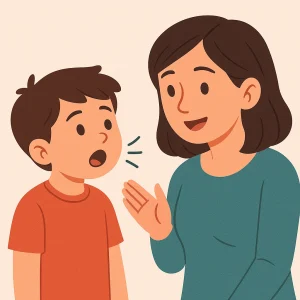20 Innovative Strategies for Speech Therapy
Last Updated: July 1, 2024
Speech therapy plays a vital role in helping individuals overcome communication challenges. It’s not just about improving speech but encompasses a wide range of aspects, including language development, social skills enhancement, and overall communication effectiveness. Whether it’s a child struggling with articulation or an adult needing to refine their conversational skills, speech therapy offers tailored strategies to address these needs.
Book a Free Online Speech Therapy Consultation
1. Simplify Language
Ever notice how kids light up when they finally understand something you’ve said? In speech therapy, simplifying language is a game-changer. By using short, clear phrases, you help children focus on the core of your message. Instead of confusing them with long, complex sentences like, “Can you please hand me the red ball from the table?”, try something like, “Give me the red ball.” It’s all about making communication easy and stress-free, so they can confidently respond and feel successful.
2. Add One Word
Expanding a child’s vocabulary doesn’t have to be overwhelming! An easy way to do this is by adding just one more word to their existing phrases. For example, if they say “ball,” you can say “big ball” or “red ball.” This method builds on what they already know, making learning feel more natural. Over time, you’ll notice their vocabulary grow without them even realizing they’re learning new words!
3. Imitation
Ever notice how kids love to copy what we do and say? It’s how they naturally learn! In speech therapy, imitation is a key tool to help children develop communication skills. By encouraging them to mimic your words and actions, you’re guiding them through the learning process. For example, if you’re rolling a ball during playtime, you can say, “I’m rolling the ball. Can you roll it too?” This way, children practice forming words and sentences by copying what they see and hear, which strengthens their language abilities over time.
Read More: Help Kids Talk: 10 Easy Speech Therapy Techniques at Home
4. Offer Choices
Kids love feeling like they have a say! Offering choices is a great way to engage them in conversation while also helping them practice decision-making and language. Instead of just giving them a snack, try asking, “Do you want the apple or the banana?” This simple question gets them thinking and responding, which is perfect for building language skills in a fun, everyday setting. Plus, giving choices makes them feel more in control, boosting their confidence to communicate.
5. Self-Talk
Ever feel like you’re talking to yourself while doing everyday tasks? That’s exactly what self-talk is—and it’s a powerful tool in speech therapy! By narrating what you’re doing, like “I’m cutting an apple” or “Now, I’m putting the slices on the plate,” you’re giving kids a language-rich environment to absorb. They see the action and hear the words, making it easier to connect language with the world around them. It’s like giving a live demonstration of how language works in real time!
6. Parallel Talk
Imagine you’re watching your child play with blocks. Instead of just observing, try parallel talk—describing what they’re doing out loud. For example, “You’re building a tall tower. You put the red block on top of the blue one.” This technique gives children the language they need while they’re actively engaged in an activity. It reinforces their understanding by directly linking words to what’s happening right in front of them, making communication feel like a natural part of their playtime.
Read More: 10 Creative Ways to Make Speech Therapy Fun
7. Repetition
Kids thrive on repetition—it’s how they learn best! In speech therapy, repeating words like “dog” multiple times—“Look at the dog. The dog is running. Do you see the dog?”—helps cement new vocabulary in their minds. The more they hear it, the easier it becomes to recall and use. Repetition builds familiarity, boosts confidence, and makes learning feel natural.
8. Increase Opportunities
Everyday moments are perfect for boosting language skills. Use mealtime, playtime, and daily routines to introduce new words. For example, while playing with toys, say “Let’s drive the car!” or at meals, talk about food—“We’re cutting the apple.” The more opportunities you create, the faster your child becomes comfortable using new words.
9. Modeling
Modeling is all about showing children how to use language by example. If you want them to ask for juice, you’d say, “Can I have juice?” and encourage them to repeat it. This technique gives kids a clear, simple guide to follow, making it easier for them to learn and mimic the right words or actions.
Example: If your child points to juice without saying anything, you can model the phrase, “I want juice, please,” and gently prompt them to try repeating it.
10. Use Visuals
Visuals can work wonders in speech therapy! Whether you use pictures, objects, or flashcards, these tools help kids connect words to real things. For example, showing an apple when teaching the word “apple” makes it easier for them to understand and remember the word.
Case Scenario: If you’re working on vocabulary for fruits, you can use a real apple during snack time, saying, “This is an apple,” to help them visually link the word with the object.
Know more: How Flashcards and First Words Games Aid Language Acquisition
11. One at a Time
Providing one item at a time encourages kids to keep communicating. For example, instead of giving a handful of cookies, offer just one, so they have to ask for more. This creates multiple opportunities to practice language and helps build patience and turn-taking skills.
Example: If your child loves cookies, give them one and wait for them to ask for another. You can prompt with, “Do you want more? Say, ‘More cookies, please.’”
12. Sabotage
Sabotage is a fun way to prompt communication by setting up small challenges. For instance, give the child a plate but no food, or hand them a closed jar. This encourages them to ask for help, boosting both problem-solving and language skills.
Example: Hand your child a favorite toy without the batteries in it, and wait for them to ask for help or say, “It’s not working!” It’s a clever way to motivate them to speak up.
13. Keep Things Out of Reach
Placing desired items just out of reach is a simple yet effective way to encourage kids to ask for what they want. For example, putting a favorite toy on a high shelf naturally motivates the child to request help. This technique not only sparks communication but also helps them practice articulating their needs clearly.
Example: Place a snack on a countertop that’s too high for your child to reach. When they try to get it, prompt them with, “What do you need?” or “Can you ask for help?”
14. Be Forgetful
Pretending to forget something is a playful way to get children to step in and use their words. For instance, say, “I forgot where I put your toy. Can you remind me?” This approach encourages them to engage in problem-solving and use their memory to communicate what they know.
Example: During playtime, “forget” to give them a puzzle piece and ask, “What’s missing?” This allows them to practice identifying and verbalizing what they need.
Know More: Innovative Speech Therapy Strategies to Enhance Your Practice
15. Don’t Anticipate
Instead of predicting what the child wants, wait for them to ask. For example, if they’re thirsty, don’t immediately offer a drink—let them request it. This helps kids become more proactive in communicating their needs and builds confidence in expressing themselves.
Example: If your child is reaching for a toy, don’t hand it to them right away. Wait for them to say, “Can I have the toy?” This encourages them to take the lead in communication.
16. Be Silly
Adding a bit of fun can make speech therapy more engaging! Try being silly—like calling a ball, a pillow and waiting for the child to correct you. This approach captures their attention and encourages them to think critically while using their language skills to point out the mistake.
Example: During a game, deliberately “forget” what an object is and say, “Is this a pillow?” and let the child eagerly correct you. It’s a fun way to boost participation and speech practice.
17. Follow the Child’s Lead
Letting the child take the lead in activities can make speech therapy more effective. When you engage with what they enjoy—like playing with cars or drawing—you create natural opportunities for them to communicate. For instance, if the child loves cars, you could say, “The car is going fast! Can you make it go slow?” This way, language learning feels fun and relevant, encouraging them to speak more confidently.
Example: If your child is building with blocks, follow their play and say, “You’re building a tall tower! Can you add a blue block?” This adds language practice to something they love.
18. Try New Activities
Fresh activities spark interest and stimulate language development. Whether it’s a new song or a sensory activity like crafting with playdough, introducing something new keeps learning exciting. For example, singing a new song each week can boost vocabulary, while making a collage can encourage them to describe what they’re creating.
Example: Introduce a sensory bin filled with different textures and ask your child to describe what they feel—like “soft,” “rough,” or “squishy”—to encourage descriptive language.
19. Use Verbal Routines
Creating verbal routines gives children a predictable structure that encourages active participation. For instance, using a phrase like “1, 2, 3, go!” before an activity helps them anticipate what’s next and join in. These routines make language learning feel more secure and organized, making it easier for kids to understand and communicate.
Example: Before a game, say, “Ready, set, go!” and let the child complete the routine. This repetition helps reinforce their understanding of language patterns.
20. Sing Songs
Singing songs is a playful way to boost language development. Songs introduce rhythm, rhyme, and new vocabulary in a fun format. Singing nursery rhymes or songs about daily activities helps children grasp language patterns and makes learning enjoyable and memorable.
Example: Sing a simple song like “Twinkle, Twinkle, Little Star” and encourage the child to join in. The repetition and melody help reinforce new words in a way that sticks.
Daily Routine Table
| Time of Day | Activity | Language Opportunity |
|---|---|---|
| Morning | Breakfast – “Cut bread” – “Pour milk” – “Spread butter” | Name foods and describe actions. |
| Playtime | Playing with toys | Use descriptive language – “Red car” – “Build a tower” – “Soft teddy bear” |
| Afternoon | Crafting | Introduce new vocabulary – “Glue, scissors” – “Cut paper” – “Stick the star” |
| Evening | Dinner | Discuss daily activities – “How was your day?” – “What did you do at school?” – “Tell me something fun you did” |
| Bedtime | Reading a story | Ask questions about the story – “What happened next?” – “Who is your favorite character?” – “Why did the character do that?” |
Conclusion
Incorporating these 20 innovative speech therapy strategies can make a big difference in communication development. From using simple language to engaging in fun activities like singing, these techniques build confidence and improve speech skills for both children and adults. At Wellness Hub, we’re dedicated to providing effective therapy tools and resources to support every individual’s unique needs. Consistency and making learning enjoyable are key to success.
Frequently Asked Questions:
1. What are some innovative strategies for speech therapy?
Innovative strategies for speech therapy include simplifying language, adding one word to the child’s vocabulary, using self-talk and parallel talk, repetition, providing numerous opportunities to use new words, modeling, using visuals, and more. Each strategy is designed to enhance communication skills effectively.
2. How can I use self-talk in speech therapy?
Self-talk involves narrating your actions out loud as you do them. For example, saying, “I am cutting an apple,” helps the child connect words with actions and objects, making language learning more immersive.
3. Why is repetition important in speech therapy?
Repetition helps reinforce learning and aids in memory retention. By repeatedly using words and phrases, children become more familiar and confident in using them, which enhances their communication skills.
4. How can I encourage my child to use new words?
You can encourage your child to use new words by providing numerous opportunities throughout the day. Incorporate new vocabulary during playtime, meals, and daily routines, making language learning a part of everyday activities.
5. What is the role of visuals in speech therapy?
Visuals, such as objects or pictures, aid understanding and retention by providing concrete references. They help children connect words with tangible items, making abstract language concepts more accessible.
6. How can I use modeling in speech therapy?
Modeling involves showing the child how to say or do something. For example, you can demonstrate how to ask for juice by saying, “Can I have juice?” and then encourage the child to repeat it. This provides a clear example for the child to follow.
7. What is the benefit of using verbal routines in speech therapy?
Verbal routines create a structured environment that helps children predict and participate in activities. Consistent phrases like “1, 2, 3, go!” provide a sense of security and help children understand and use language predictably.
8. How does incorporating music help in speech therapy?
Music and songs make learning fun and memorable. Singing helps children learn about rhythm, rhyme, and new vocabulary, reinforcing language patterns in an enjoyable way.
9. How can I engage my child in speech therapy activities?
Engage your child by following their lead and incorporating activities they are interested in. Introducing new crafts, sensory activities, or songs can also capture their interest and stimulate language development.
10. What resources are available at Wellness Hub for speech therapy?
At Wellness hub, we offer a variety of resources, personalized advice, and professional guidance to support your speech therapy journey. Visit our website for more tips, articles, and expert assistance.
About the Author:
Anuradha Karanam
Speech-language pathologist (7+ years of experience)
Anuradha Karanam is a skilled speech-language pathologist with over 6 years of experience. Fluent in Tamil, Telugu, Hindi, and English, she specializes in parent counseling, speech sound disorders, fluency assessment, and speech-language evaluations. Anuradha excels at working with children with developmental disorders, offering creative and effective therapy programs. Currently, at Wellness Hub, she holds a BASLP degree and is registered with the RCI (CRR No A85500). Her patience, ambition, and dedication make her a trusted expert in her field.
Book your Free Consultation Today
Parent/Caregiver Info:
Client’s Details:
* Error Message
